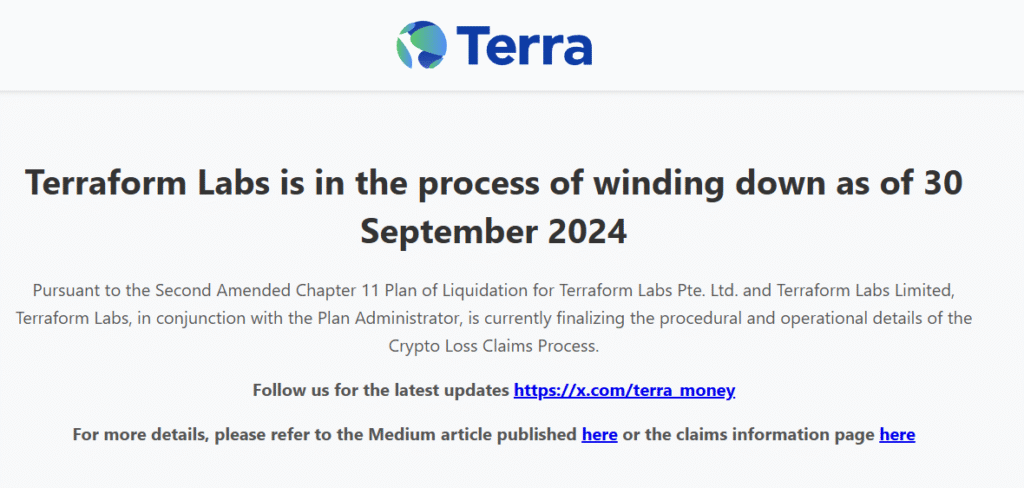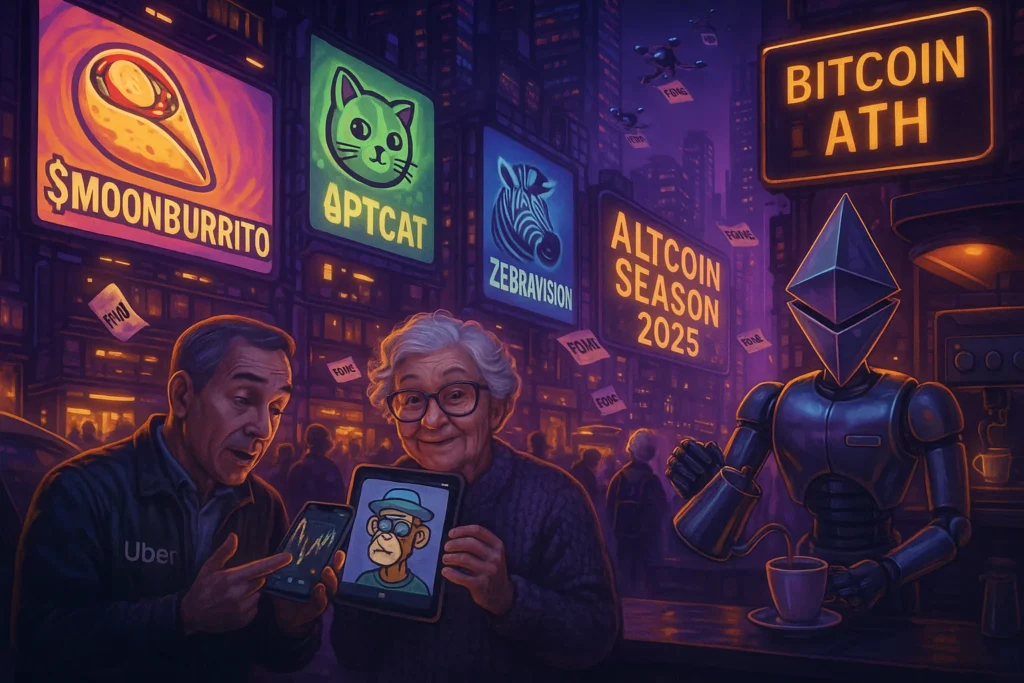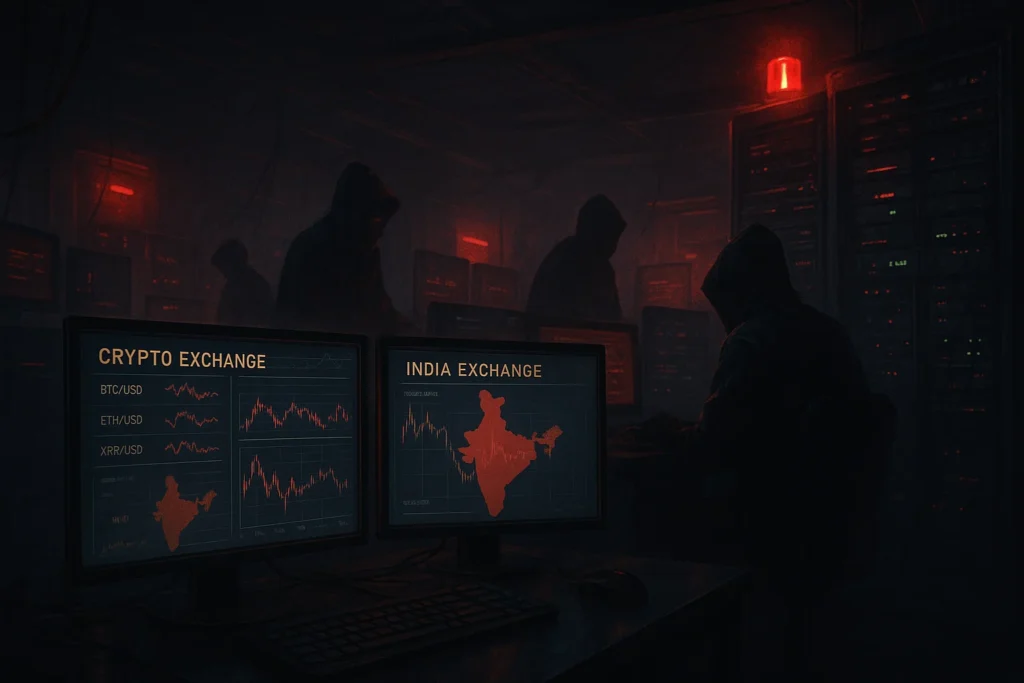Back in May 2022, something huge happened in the crypto world—Terra Luna collapsed, and it wasn’t just another dip. It was a full-blown crash that caught everyone off guard. Investors lost billions, one of the biggest algorithmic stablecoins failed overnight, and confidence in the whole DeFi system was shaken.
If you’re still wondering how it all went down—or what Terra Luna even looks like today—you’re not alone.
In this guide, we’ll break down the full story of Terra (UST) and LUNA in simple terms: how it rose, what triggered the collapse, what’s going on now with Terra Classic and Terra 2.0, and the lessons the crypto space is still learning from it.
Let’s unpack the chaos—and the comeback.
What Was Terra Luna?
Terra was a blockchain protocol created by South Korean company Terraform Labs, founded by Do Kwon. The project introduced an innovative dual-token model. The Terra blockchain was built around two key tokens: Terra (UST) and LUNA, Think of them like two teammates working together to create a new kind of digital money. This was very innovetive project in itself.
What Was UST (TerraUSD)?
UST was what’s called an algorithmic stablecoin. That’s a fancy way of saying it was a digital currency that always tried to stay equal to $1—just like how 1 USD equals ₹86 (roughly), UST tried to stay at 1 UST = $1.
But here’s the catch:
UST didn’t have any actual U.S. dollars backing it in a bank.
Instead, it used smart contracts and supply-demand logic to keep its price stable.
Imagine this:
- If UST went above $1 (say $1.02), the system encouraged people to create (mint) more UST to bring the price down.
- If UST dropped below $1 (say $0.98), the system encouraged people to destroy (burn) some UST to reduce the supply and push the price back up.
This entire process was controlled automatically by code on the blockchain—no banks, no central authority.
And Where Does LUNA Come In?
LUNA was like the shock absorber in this system.
Whenever someone wanted to create UST, they had to burn (destroy) an equal value of LUNA. And when they wanted to get rid of UST, they could burn it and get LUNA back.
So:
- To mint 100 UST, the system would burn $100 worth of LUNA.
- To burn 100 UST, the system would mint $100 worth of LUNA.
This constant give-and-take helped control the supply of both tokens and aimed to keep UST stable at $1.
But there was more to LUNA:
- It was also the governance token—meaning holders could vote on important decisions about the Terra blockchain.
- And it was used to pay fees and rewards on the network.
Lets make it more simple to understand for you…
Let’s say UST is like a bus ticket that always costs $1. But instead of paying for it with regular cash, you have to pay using LUNA tokens. Now, if more people want these tickets (UST), they buy them by exchanging LUNA, and in the process, some of that LUNA gets burned—which means it’s permanently destroyed. This reduces the total supply of LUNA, making it more rare and potentially more valuable. On the other hand, if people decide to return their tickets (UST), the system gives them LUNA in exchange, which increases the total supply of LUNA. So, UST couldn’t function without LUNA, and the value of LUNA was directly tied to how much people trusted and used UST.
Here’s a more detailed and simplified version of that section written in paragraph form with a human-friendly tone:
How Did the Algorithmic Stablecoin (UST) Work?
Unlike traditional stablecoins like USDT or USDC, which are backed by real U.S. dollars kept in bank accounts, UST didn’t have any cash backing it. Instead, it relied on smart algorithms and market incentives to keep its price stable at $1.
The system worked on a basic idea: if the price of UST went above $1, users could make a profit by burning LUNA (reducing its supply) to mint new UST. This increased the supply of UST in the market and helped bring the price back down toward $1.On the flip side, if UST’s price fell below $1, users were encouraged to burn UST and mint new LUNA. This reduced the supply of UST and was supposed to push the price back up to $1.
Read Also : What is Coin Burn in Crypto?
It was designed to be a self-balancing system, run entirely by code. But there was one big catch—it only worked as long as people believed in the system and kept using it. The whole model depended heavily on investor confidence and continuous demand. Once that trust was broken, the balancing act failed—fast.
The Collapse: What Went Wrong?
In May 2022, the unthinkable happened. After months of growth and mainstream attention, UST suddenly lost its dollar peg—and it triggered one of the most devastating crashes in crypto history.
It all started with a massive sell-off of UST, possibly sparked by a large withdrawal or coordinated move. As UST dipped below $1, the system kicked in to correct it. But instead of recovering, things spiraled out of control. People began panic selling—not just UST, but also LUNA, the token meant to stabilize it.
The algorithmic mechanism that was supposed to maintain balance—burning one token to mint the other—completely broke down under pressure. As more and more UST was burned to try and mint LUNA, the supply of LUNA exploded—billions of new LUNA tokens flooded the market in just days, causing the value of LUNA to crash from over $80 to less than a fraction of a cent.
What followed was total chaos.
- UST completely lost its peg, dropping to pennies.
- The value of LUNA was wiped out, making it virtually worthless.
- More than $40 billion in market value vanished almost overnight.
- Leading crypto exchanges like Binance and Coinbase delisted both tokens.
- Investor trust was shattered, not just in Terra, but in the entire idea of algorithmic stablecoins.
But beyond the numbers, this crash had a deep human cost.
Thousands of everyday investors—many of whom were new to crypto—lost their life savings. People who had trusted UST as a “safe” digital dollar, or staked LUNA believing in its future, woke up to see their portfolios go to zero. Reddit and Twitter were flooded with heart-wrenching posts: people crying over losing college funds, retirement money, even emergency savings.
One Reddit user wrote, “I was so confident in UST. I convinced my wife to put our down payment for a house into Anchor. Now I don’t know how to tell her it’s all gone.”
Another simply posted, “Please check on your friends who were into LUNA.”
Online forums turned into emotional support groups overnight. Memes turned into mourning. Crypto influencers who once praised Terra as the future of finance went silent—or tried to distance themselves. It wasn’t just a financial collapse—it was a psychological one.
The entire event is now remembered as the “Terra Luna crash”, a textbook example of what can go wrong when financial systems rely purely on code without enough safeguards, reserves, or human intervention.
In hindsight, it exposed major flaws in tokenomics design, overconfidence in algorithmic stability, and the echo chamber of crypto hype. It also sparked global conversations about the need for regulation, transparency, and risk education in the rapidly growing world of decentralized finance.
What Is the Current Status of Terra Luna? (As of 2025)
Fast forward to 2025, and the Terra story is still unfolding.
LUNC (Terra Classic)
LUNC has become something of a symbol of community resilience. Despite having no stablecoin and no official leadership, a group of committed supporters continues to push forward. There are ongoing token burn events to reduce LUNC’s massive supply, regular validator upgrades, and community-driven development proposals.
Still, the project lacks any major utility or roadmap. Most people see LUNC as a high-risk, speculative token, driven more by nostalgia, trader hype, and the “what if” sentiment than by fundamentals. Occasionally, spikes in price bring media attention, but there’s no clear path to long-term recovery.
LUNA (Terra 2.0)
LUNA, the token of the new Terra chain, has tried to distance itself from the past. It’s been adopted in some DeFi protocols, and a handful of developers have continued building on Terra 2.0. But it hasn’t been easy.
Investor trust is still broken, and the ecosystem hasn’t reached the kind of volume or developer activity that Terra once boasted. Although technically sound, Terra 2.0 is still trying to find its place in a crowded and competitive blockchain landscape.
Many users who received LUNA through the airdrop have already sold off their holdings, either cutting their losses or moving on from the project entirely.
Legal Storm Clouds
And then there’s Do Kwon—the face of Terra’s original rise and dramatic fall.
In 2023, he was arrested while allegedly trying to evade authorities and was later charged in multiple countries, including the United States and South Korea, for fraud, market manipulation, and violating securities laws. Investigations into Terraform Labs and its role in the UST collapse are still ongoing. Now Terraform Tabs has been shutdown.

The legal fallout has kept Terra in the news, but not in the way any project would want.
The Bigger Picture: Lessons from Terra
The Terra Luna story is more than just a crash—it’s a powerful reminder that in crypto, innovation without safeguards can be dangerous. It exposed flaws in token design, overconfidence in code-based economies, and how quickly mass adoption can turn into mass panic.
The crypto space is still learning from this event, and regulators, developers, and investors continue to reference Terra as a cautionary tale. Whether you’re bullish or skeptical about crypto’s future, Terra’s rise and fall will remain one of the most defining chapters in DeFi history.
Final Thoughts
The journey of crypto Terra Luna is a blend of ambition, innovation, and painful lessons. For new investors, it’s a wake-up call. For developers, it’s a blueprint of what not to repeat. And for the wider crypto industry, it’s a chance to grow stronger and more resilient.
If you’re exploring stablecoins, tokenomics, or the future of decentralized finance, Terra Luna’s story is a must-know. Because while its original form may have collapsed, the impact it left on crypto isn’t going anywhere.
FAQs
1. What’s the Difference Between LUNA and LUNC?
LUNA is the new token launched under Terra 2.0, created after the crash.
LUNC (Luna Classic) is the original Terra Luna token that existed before the crash and now runs on the Terra Classic chain. The two have different ecosystems and use cases.
2. Who Is Do Kwon?
Do Kwon is the co-founder and former CEO of Terraform Labs, the company behind Terra Luna. After the collapse of UST and LUNA, he became a controversial figure and was arrested in 2023. He faces multiple fraud charges and investigations in the U.S., South Korea, and other countries.
3. How Much Value Was Lost in the Terra Crash?
In May 2022, the combined market value of UST and LUNA dropped from over $40 billion to nearly zero in under a week. This remains one of the largest and most rapid collapses in cryptocurrency history.
4. Is Terra Luna Still a Good Investment?
LUNA (2.0) has potential but struggles to regain user trust, while LUNC is mostly speculative and community-driven. Investors should approach both with caution and do their own research, especially given past volatility and ongoing legal risks.
5. What Happened to UST (TerraUSD)?
UST was an algorithmic stablecoin designed to stay at $1, but it lost its peg during the 2022 crash and never recovered. It is no longer actively used or supported, and most of the ecosystem has moved on.
6. What Legal Action Has Been Taken Against Terra?
Several lawsuits and criminal investigations are underway. Regulators, including the SEC, have accused Terraform Labs and Do Kwon of fraud, market manipulation, and violating securities laws. The legal process is ongoing as of 2025.
7. What Is the Purpose of Token Burns in Terra Classic?
Token burns reduce the circulating supply of LUNC to potentially increase its value. The Terra Classic community uses burns as a strategy to restore price stability and attract attention, though results have been limited so far.
8. What Is the Terra Ecosystem Used For Today?
- Terra Classic (LUNC) is maintained by its community, but has limited DeFi activity.
- Terra 2.0 (LUNA) aims to rebuild an ecosystem of decentralized applications (dApps) and DeFi tools, but adoption is still slow.
9. Is Terra 2.0 More Secure Than the Original Terra?
Terra 2.0 does not include any algorithmic stablecoin, which eliminates the core design flaw that led to the original collapse. However, security in crypto also depends on governance, smart contract audits, and market behavior.


